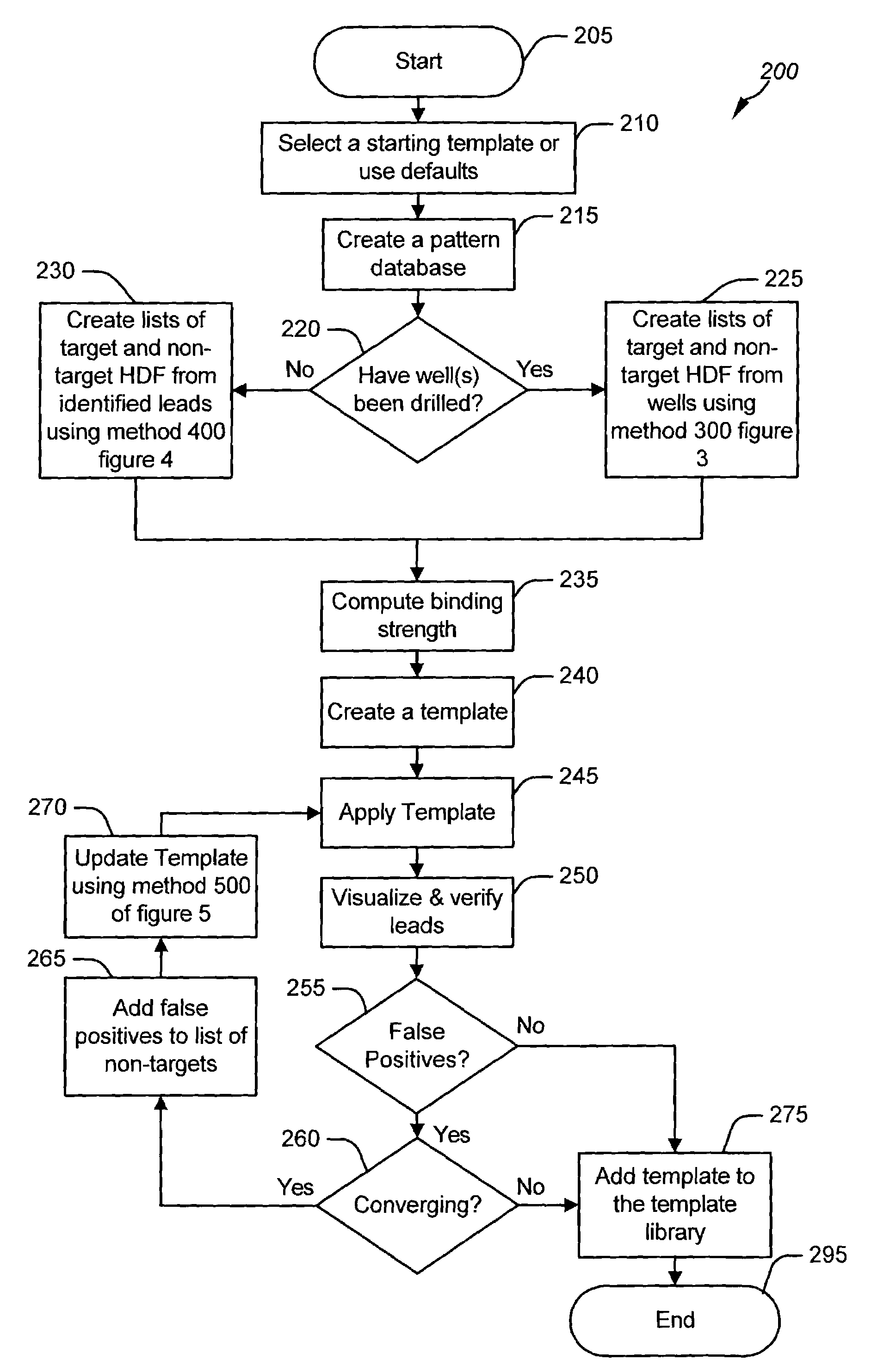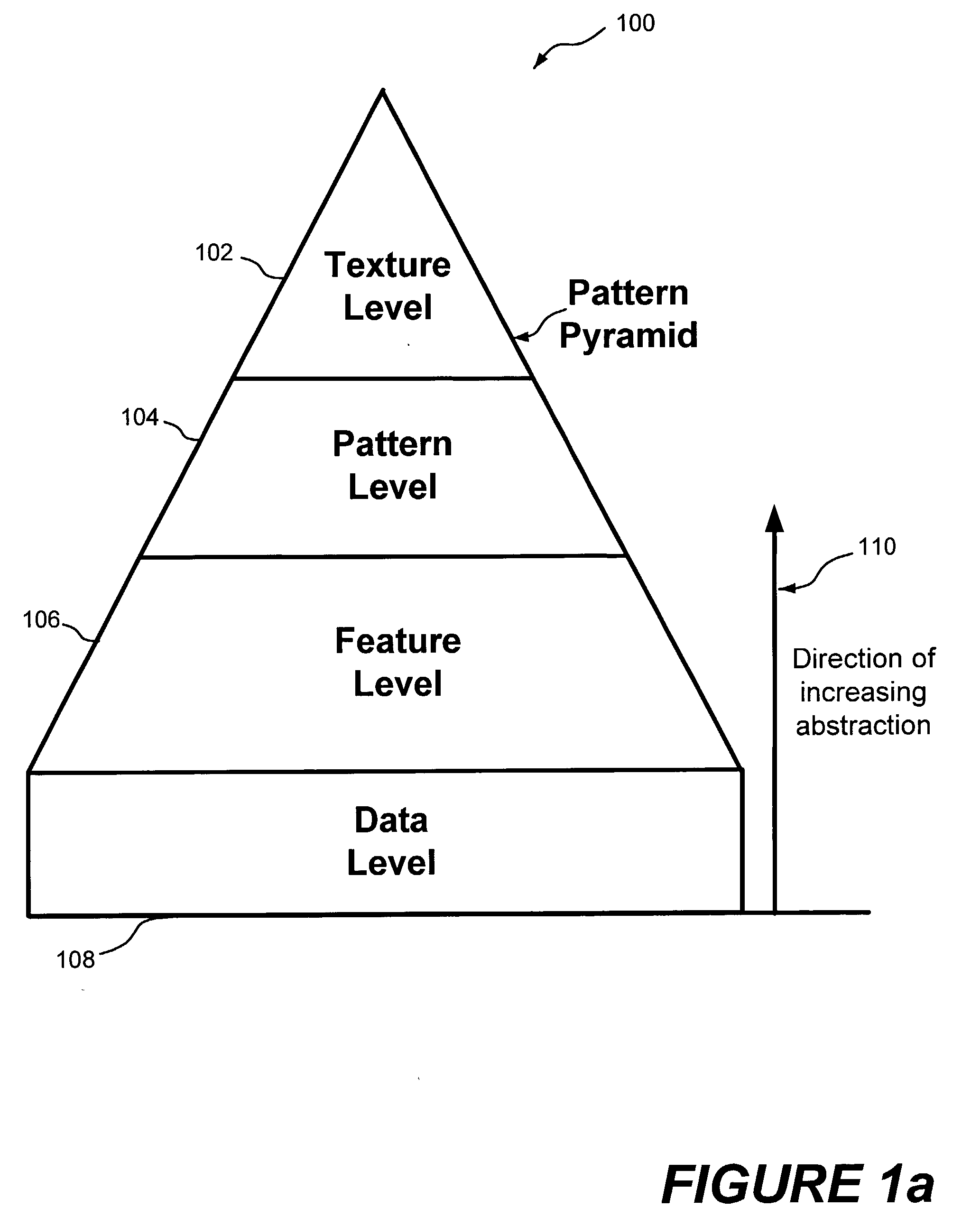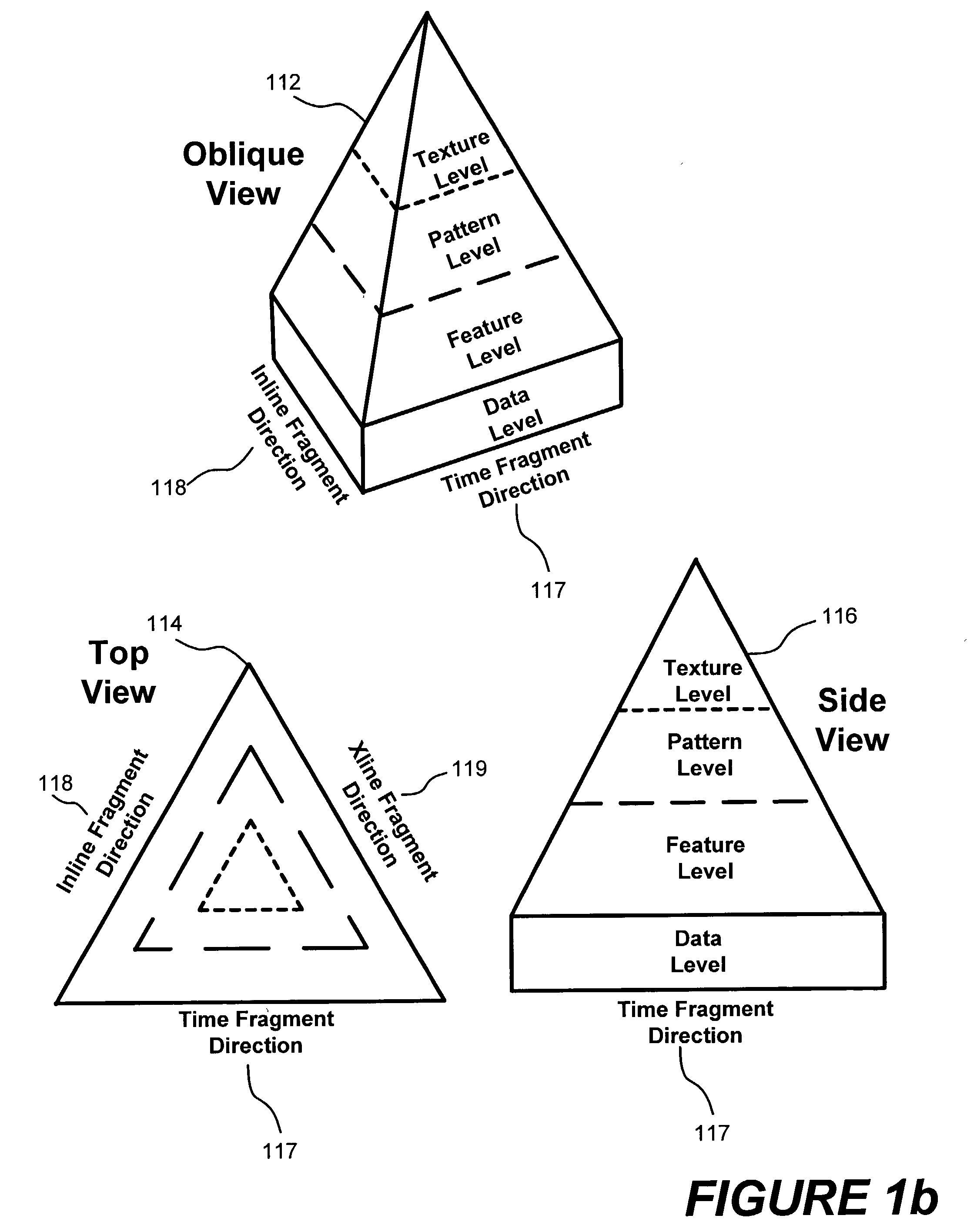Pattern recognition template construction applied to oil exploration and production
a pattern recognition and template technology, applied in the field of oil exploration and production, can solve the problems of significant trade-offs between techniques and techniques, difficulty in reviewing the history of exploration decisions and repeating the decision process using conventional procedures, and not generally documented rationale in detail
- Summary
- Abstract
- Description
- Claims
- Application Information
AI Technical Summary
Benefits of technology
Problems solved by technology
Method used
Image
Examples
Embodiment Construction
[0027]The present invention includes a system for and method of extracting, organizing, and classifying features, patterns, and textures from a data set. The data and the information extracted therefrom, is organized as a pattern hierarchy and stored in a pattern database. The present invention also provides a system for the segmentation and the analysis of geological objects, for example, by identifying, extracting, and dissecting the best estimate of hydrocarbon filled reservoir rocks from band-limited acoustical impedance (“RAI”) data computed from 3D seismic data or, if available, broadband acoustical impedance (“AI”) computed from 3D seismic data, stacking velocities, well logs, and user supplied subsurface structural models. In addition the present invention includes a system for capturing the knowledge of the geoscientists operating the present invention in templates and reusing the templates for automated mining of large volumes of data for additional geological objects.
[002...
PUM
 Login to View More
Login to View More Abstract
Description
Claims
Application Information
 Login to View More
Login to View More - R&D
- Intellectual Property
- Life Sciences
- Materials
- Tech Scout
- Unparalleled Data Quality
- Higher Quality Content
- 60% Fewer Hallucinations
Browse by: Latest US Patents, China's latest patents, Technical Efficacy Thesaurus, Application Domain, Technology Topic, Popular Technical Reports.
© 2025 PatSnap. All rights reserved.Legal|Privacy policy|Modern Slavery Act Transparency Statement|Sitemap|About US| Contact US: help@patsnap.com



